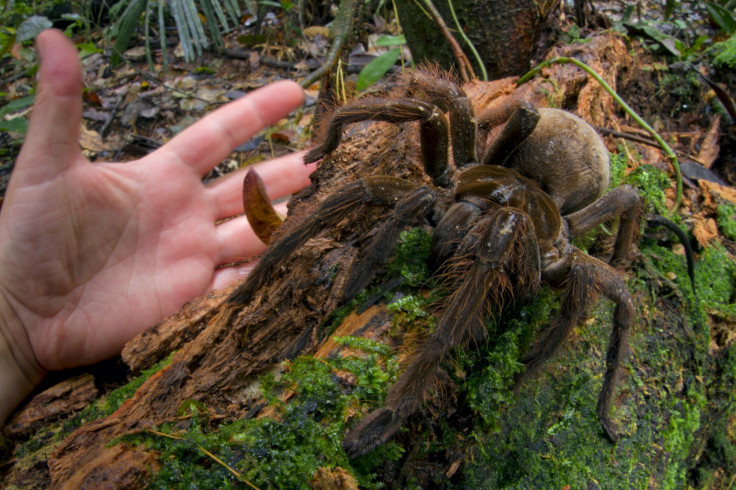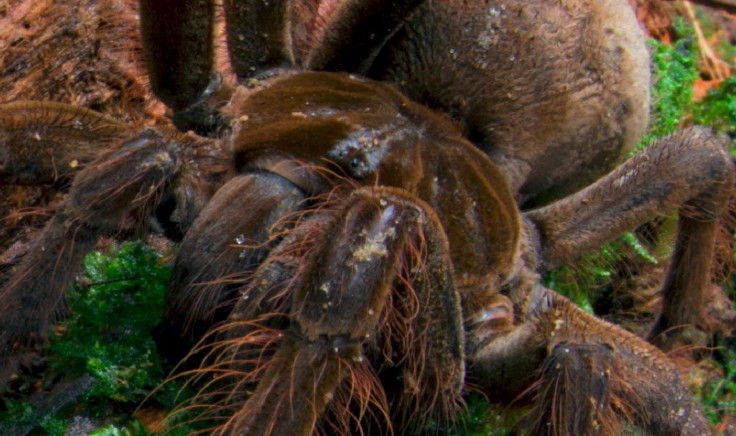World's Biggest Spider: Goliath Birdeater Scientist 'Sent Death Threats' After Killing Monster Arachnid

The scientist who made headlines last month after photographing a "puppy-sized spider" said he received death threats after publishing his blog post on the species.
The South American Goliath birdeater is officially recognised by Guinness World Records as the world's biggest spider.
With legs almost a foot long and weighing up to 170g, entomologist Piotr Naskrecki recently commented they are about the same size as a puppy.
Writing on his blog, The Smaller Majority, he explained how he came across the giant spider while out walking.
"Every time I got too close to the birdeater it would do three things. First, the spider would start rubbing its hind legs against the hairy abdomen. 'Oh, how cute!', I thought when I first saw this adorable behaviour, until a cloud of urticating hair hit my eyeballs, and made me itch and cry for several days," he wrote.
"If that wasn't enough, the arachnid would rear its front legs and open its enormous fangs, capable of puncturing a mouse's skull, and tried to jab me with the pointy implements. The venom of a birdeater is not deadly to humans but, in combination with massive puncture wounds the fangs were capable of inflicting, it was definitely something to be avoided."
His post went viral, with over 120,000 unique visits per day and news of the spider spread across the globe. When speaking to a reporter, he told how he collected specimens for a museum.
In response, he started getting death threats. Speaking to NPR about the backlash, he said: "I have received quite a bit of negative reactions to the fact that we scientists have to collect specimens occasionally. I would like to emphasise that we never do it lightly and this is probably the most unpleasant part of our job. But unfortunately, there's really no other way to look inside of an organism.

"We need to dissect things to see how their internal organ works. The easiest way to get the DNA is to grind the muscle of an organism. But in addition to that, we collect specimens not knowing what they will be used for.
"The museum where I work has 21 million specimens collected over the last 200 or 300 years, and they're still being studied. And we are still answering questions that would have been unconceivable when the specimens were first collected."
Naskrecki also noted, in response to much of the feedback that said he is driving the species to extinction, that the Goliath birdeater is thriving in the wild.
He said: "It's a very, very common species. It's actually very common in the pet trade. I went to a local pet store to buy some dog food and the first thing I see is that Goliath being on sale. And they are in no way endangered. What is endangered is their habitat."
He conceded, however, that it might have been better to compare the spider to a rat rather than a puppy.
Discussing the Goliath birdeater, Naskrecki also dispelled the idea that the giant spider actually eats birds.
He said: "Alas, the truth is a bit less exciting. Although definitely capable of killing small birds, they rarely have a chance to do so while scouring the forest floor at night [however, there is some anecdotal evidence that they may feed on bird eggs if they run across a nest].
"Rather, they seem to be feeding on what is available in this moist and warm habitat, and what is available is earthworms – lots of them."
© Copyright IBTimes 2024. All rights reserved.






